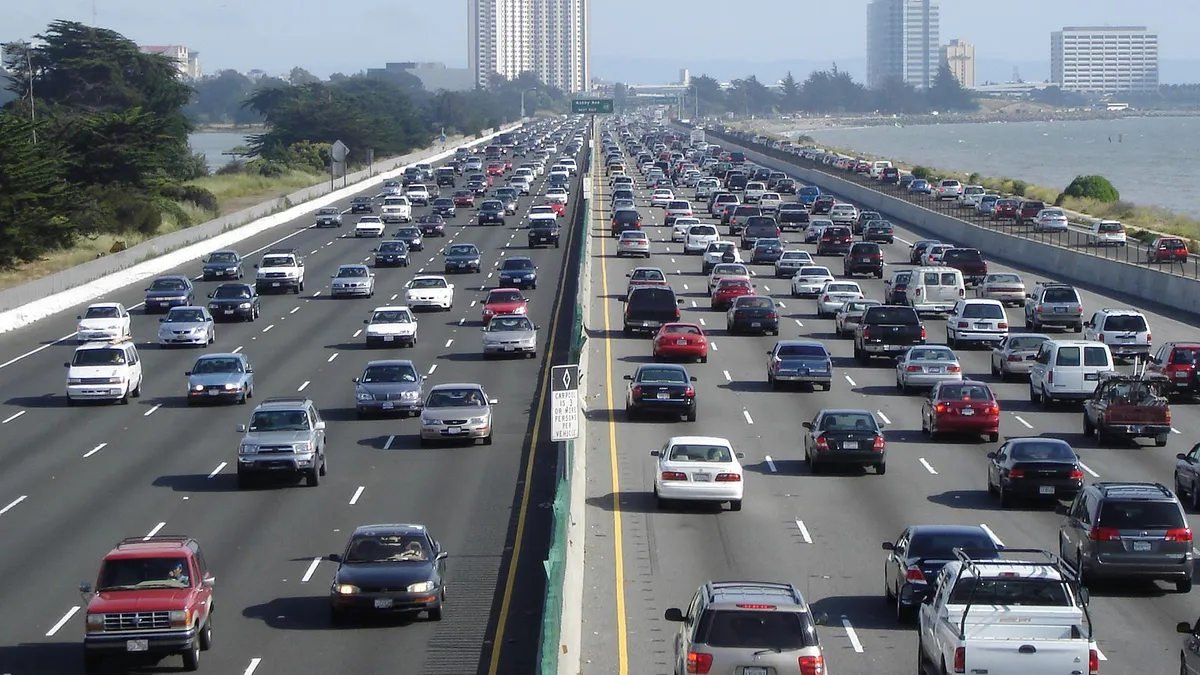Dive Brief:
-
An additional 3.9 million EVs would add about 15,500 GWh of charging demand to California's grid, according to a report released recently by Next 10, which is equivalent to around 5% of the state's total energy load in 2016.
-
The report also predicts that the expansion of ride-hailing vehicles as well as other mobility services will likely increase the number of EVs on the road. The extra electricity demand, it notes, will require infrastructural upgrades including flexible charging stations that will save consumers $100-200 million a year.
-
If California can bring its current fleet of 369,000 electric vehicles (EVs) to 5 million by 2025, the state would be able to reduce its renewable energy curtailment by 50%, meeting Gov. Jerry Brown's goal, according to the report.
Dive Insight:
As other states look into EV programs, upgrading systems to curtail peak-time charging and ensuring the system can accommodate the extra load has become a central piece of development.
The California report indicates that new management strategies will likely be necessary to accommodate the increased numbers of EVs on the road, including time-of-use charging to shift power to off-peak hours. Smart charging, which "allows active electric vehicle charging to be turned on or off to coincide with times of low wholesale prices or high 2 renewable generation," is another strategy the report suggests to curtail demand on the grid.
Additionally, if more EVs are used in a shift towards ride-hailing, daytime charging is more likely to occur, which will increase the load during the day. The extra day-time load could help combat the state's duck curve, making the additional vehicles "not a back-breaking issue for the grid," Anand Gopal, the report's author, tells Utility Dive.
Southern California Edison has been pushing for California to look even further than Brown's proposed 5 million vehicles. The utility asserts that the state will need 7 million cars on the roads by 2030 to cut California emissions to 40% below 1990 levels by 2030 and rolled out an ambitious $760 million plan this year to make that happen.
Emissions mandates as well as more competitive pricing makes the 5 million number "not really beyond the realm" of feasibility, says Gopal. He also notes climate change advocates would call that number an underestimate and say the state "should be blowing by that number by 2030 if we want to have a serious impact on climate change."















